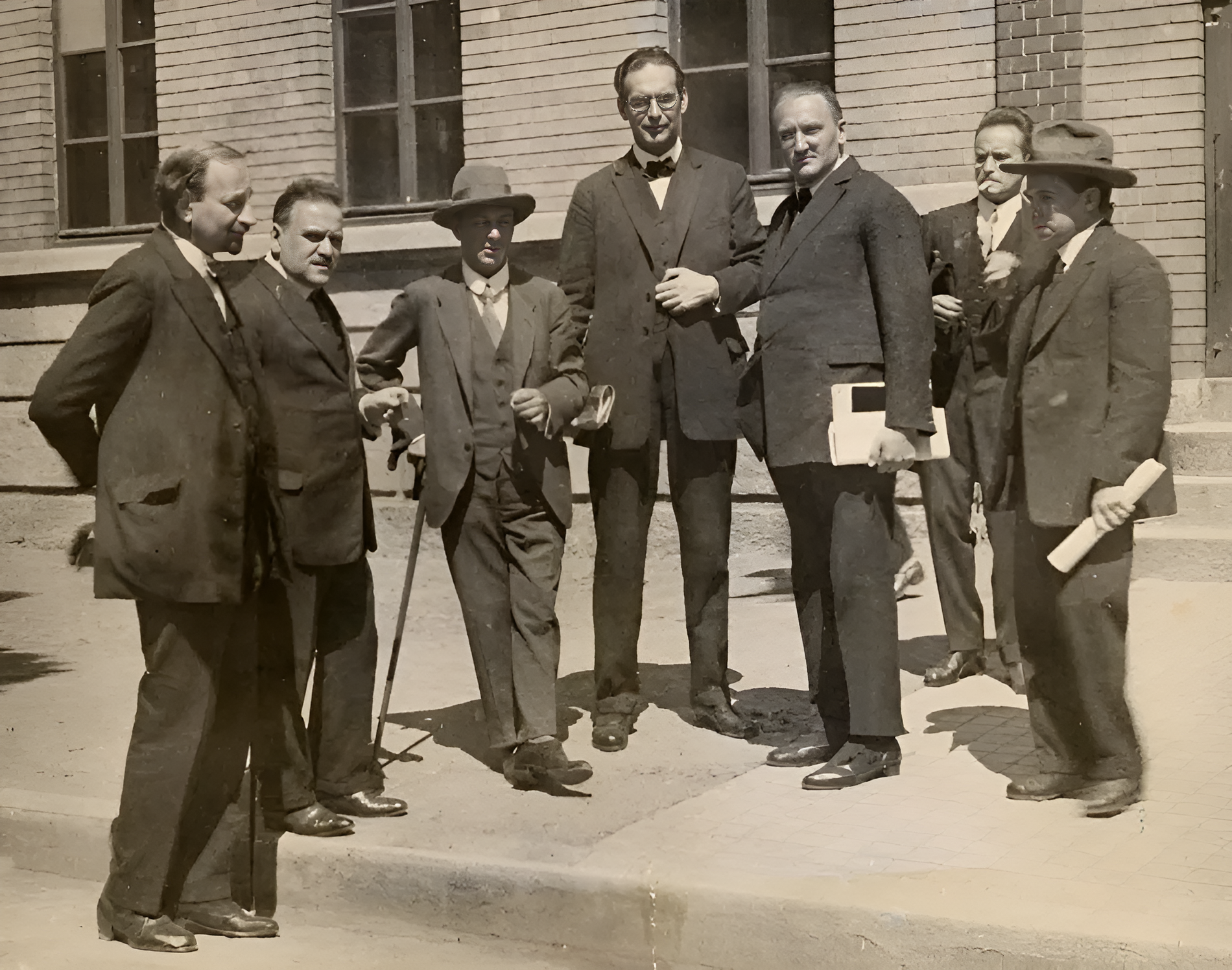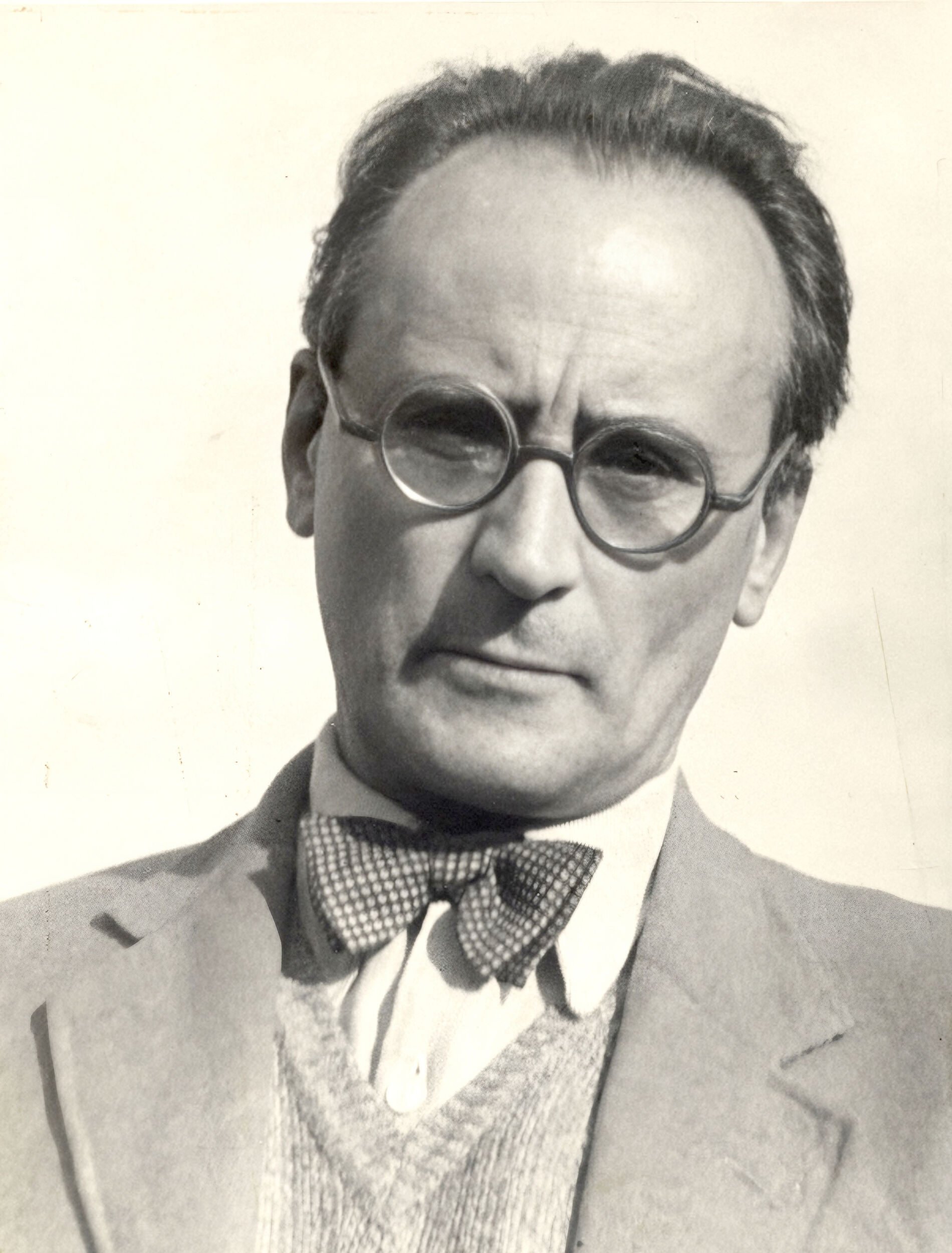Schoenberg’s development of the twelve-tone system in the early 1920s offered a compositional tool to regulate the use of all twelve pitch classes. His own practice, however, remained flexible and often accommodated traditional gestures. In works such as the Suite for Piano, Op. 25, or the String Quartet No. 4, Op. 37, the rows support motivic continuity, symmetrical designs, and echoes of tonal cadence. The serial framework is a means to achieve large-scale coherence while preserving Romantic expressive intensity.[5] Webern, by contrast, reduced the system to its most ascetic application. His rows were not thematic materials but total organizational structures. In the Symphony, Op. 21, the row is distributed canonically, with inversion and retrograde permeating not only pitch but also registral spacing and timbre. The pointillistic orchestration—harp, clarinet, horn, and muted strings trading single notes—turns the row into a constellation of sounds. Each gesture is brief, often separated by silence, and the perception of continuity arises from symmetry rather than melodic line.[6]
Where Schoenberg’s serialism allows traces of tonal rhetoric, Webern’s eliminates it. His rows avoid intervallic patterns that suggest tonal centres, and his textures resist climactic build up. For Schoenberg, twelve-tone writing remained bound to the narrative of historical continuity—“emancipating dissonance” as a logical extension of German musical tradition. For Webern, it became a discipline of reduction, a search for purity of structure that stripped music to its minimum elements.[7] This difference also shaped their reception. Schoenberg’s works were read as extensions of Romantic expression, still tethered to older audiences. Webern’s brevity and abstraction alienated contemporary listeners but fascinated postwar serialists, who found in his scores a model for applying serialism to every musical parameter. In this sense, Webern’s use of the twelve-tone method diverged fundamentally: Schoenberg’s serialism was synthetic and expansive, while Webern’s was analytic and ascetic. Both shared the same method, but Webern turned it into an aesthetic of fragmentation that defined the postwar avant-garde.[8]
Political Disruption and the Fractures of WWII
The 1930s were the second chapter of political disruption in Webern’s life. With the Nazi seizure of power in Germany in 1933, Schoenberg, was forced into exile in Paris as a Jewish composer, and later emigrated to the United States. Many of Schoenberg’s pupils also scattered across the globe from Shanghai to Argentina, but Webern remained in Austria. His music was increasingly stigmatized as Entartete Musik (“degenerate music”) and effectively excluded from concert life. Performances of his works ceased in Vienna after 1934, and publishers were unwilling to issue his scores.[9] After the Anschluss (Annexation) of 1938, Austria’s musical institutions came under direct Nazi supervision, which reinforced Webern’s isolation. Webern’s position during this period was precarious. He was not Jewish or subject to racial persecution by the Third Reich, nor did he ever join the Nazi Party, yet he was not free from the ideological pressures of the regime. Letters reveal occasional sympathy for notions of discipline and cultural renewal, but his works had no place in official programs. He relied on teaching, occasional conducting, and financial support from family. Privately, he maintained contact with exiled colleagues, especially Schoenberg, though his inability or unwillingness to emigrate kept him on the margins of Schoenberg’s inner circle.[10] Similarly, his failure to subscribe to the politics of the Reich, unwillingness to bend his musical aesthetics to the Hitlerite demands of tonality and Teutonic patriotism, and his personal choice to not join the Party made him an outcast within Austria. His conduct during these years has been described as “inner emigration”: withdrawal from public life, concentration on composing, and survival in an environment where his music could not be performed.[11]
Few musicians performed his works during this time. One notable exception was Karl Rankl, who attempted to include Webern’s pieces in some small, private concert settings, but performances were rare and limited. Webern’s personal life was equally constrained: food shortages, curfews, and the constant presence of wartime authorities limited mobility and social engagement. Despite this, he produced works of remarkable conciseness and intensity, reflecting the extreme economy and focus that would define his late style. His posthumous recognition would eventually highlight the radical innovation of this period, though during the war, his creative output existed almost entirely in private, unperformed form.
The importance of his atonal writing in this context lies in its opposition to Nazi cultural aesthetics. While official culture demanded monumental orchestration, tonal clarity, and mythic subject matter, Webern wrote works of extreme brevity and fragility, such as the String Quartet, Op. 28, completed in 1938. Here the twelve-tone method shapes every gesture, but the result is music of whispers and pauses, radically unsuited to the regime’s demand for ideological spectacle. His music thus became emblematic of a suppressed modernism, a form of cultural exile even for one who remained physically in Austria.⁷ The collapse of the Reich in 1945 brought little reprieve, particularly living in destroyed Vienna with few options for financial or artistic mobility. Webern and his family retreated to Mittersill near Salzburg, and on the 15th of September, shortly after the German surrender, Webern stepped outside his house during a nighttime search by American troops and was shot accidentally by a soldier enforcing curfew. His death, at age sixty-one, underscored the tragic irony of his life: silenced first by censorship, then by war, and finally by accident.[12]
Webern’s posthumous reputation grew largely outside Austria. Exiled musicians carried his scores to the United States, and after the war younger European composers such as Pierre Boulez and Karlheinz Stockhausen claimed him as a precursor of integral serialism – applying serialist constructions beyond pitch and to other compositional elements. The fragments he composed in obscurity during the Nazi years became foundations for the reconstruction of postwar modernism. His life, marked by loyalty, silence, and tragedy, embodies the entanglement of musical innovation with the political violence of the twentieth century.[13]
Alexandra Birch, October 2025
Sources
- Malcolm MacDonald, Anton Webern and His World (Princeton: Princeton University Press, 1995), 12–15.
- Kathryn Bailey, The Twelve-Note Music of Anton Webern: Old Forms in a New Language (Cambridge: Cambridge University Press, 1991), 23–28.
- Hans Moldenhauer, Anton von Webern: A Chronicle of His Life and Work (New York: Knopf, 1979), 100–104.
- Julian Johnson, Webern and the Transformation of Nature (Cambridge: Cambridge University Press, 1999), 5–6.
- Hans Heinz Stuckenschmidt, Arnold Schoenberg: His Life, World and Work (New York: Schirmer, 1977), 312–314.
- Bryan R. Simms, The Atonal Music of Arnold Schoenberg, 1908–1923 (New York: Oxford University Press, 2000), 183.
- Bailey, The Twelve-Note Music of Anton Webern, 77–82.
- Pierre Boulez, Orientations (Cambridge, MA: Harvard University Press, 1986), 67–69.
- Michael Kater, Different Drummers: Jazz in the Culture of Nazi Germany (New York: Oxford University Press, 1992), 54.
- Pamela M. Potter, Most German of the Arts: Musicology and Society from the Weimar Republic to the End of Hitler’s Reich (New Haven: Yale University Press, 1998), 199.
- Walter and Ursula Moldenhauer, Webern: A Chronicle of His Life and Work (New York: St. Martin's Press, 1978), 516–519.
- Alex Ross, The Rest Is Noise: Listening to the Twentieth Century (New York: Farrar, Straus and Giroux, 2007), 229–233.
- Richard Taruskin, The Oxford History of Western Music, vol. 4 (Oxford: Oxford University Press, 2005), 250.





